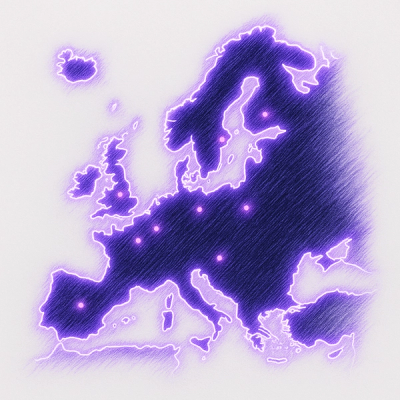Relay Library for GraphQL Python
GraphQL-relay-py is the Relay library for
GraphQL-core.
It allows the easy creation of Relay-compliant servers using GraphQL-core.
GraphQL-Relay-Py is a Python port of
graphql-relay-js,
while GraphQL-Core is a Python port of
GraphQL.js,
the reference implementation of GraphQL for JavaScript.
Since version 3, GraphQL-Relay-Py and GraphQL-Core support Python 3.6 and above only.
For older versions of Python, you can use version 2 of these libraries.






Getting Started
A basic understanding of GraphQL and of the GraphQL Python implementation is needed
to provide context for this library.
An overview of GraphQL in general is available in the
README for the
Specification for GraphQL.
This library is designed to work with the
the GraphQL-Core
Python reference implementation of a GraphQL server.
An overview of the functionality that a Relay-compliant GraphQL server should provide
is in the GraphQL Relay Specification
on the Relay website.
That overview describes a simple set of examples that exist
as tests in this repository.
A good way to get started with this repository is to walk through that documentation
and the corresponding tests in this library together.
Using Relay Library for GraphQL Python (graphql-core)
Install Relay Library for GraphQL Python
pip install graphql-core
pip install graphql-relay
When building a schema for GraphQL,
the provided library functions can be used to simplify the creation of Relay patterns.
All the functions that are explained in the following sections must be
imported from the top level of the graphql_relay package, like this:
from graphql_relay import connection_definitions
Connections
Helper functions are provided for both building the GraphQL types
for connections and for implementing the resolve method for fields
returning those types.
connection_args returns the arguments that fields should provide when
they return a connection type that supports bidirectional pagination.forward_connection_args returns the arguments that fields should provide when
they return a connection type that only supports forward pagination.backward_connection_args returns the arguments that fields should provide when
they return a connection type that only supports backward pagination.connection_definitions returns a connection_type and its associated
edgeType, given a name and a node type.connection_from_array is a helper method that takes an array and the
arguments from connection_args, does pagination and filtering, and returns
an object in the shape expected by a connection_type's resolve function.cursor_for_object_in_connection is a helper method that takes an array and a
member object, and returns a cursor for use in the mutation payload.offset_to_cursor takes the index of a member object in an array
and returns an opaque cursor for use in the mutation payload.cursor_to_offset takes an opaque cursor (created with offset_to_cursor)
and returns the corresponding array index.
An example usage of these methods from the test schema:
ship_edge, ship_connection = connection_definitions(ship_type, "Ship")
faction_type = GraphQLObjectType(
name="Faction",
description="A faction in the Star Wars saga",
fields=lambda: {
"id": global_id_field("Faction"),
"name": GraphQLField(GraphQLString, description="The name of the faction."),
"ships": GraphQLField(
ship_connection,
description="The ships used by the faction.",
args=connection_args,
resolve=lambda faction, _info, **args: connection_from_array(
[get_ship(ship) for ship in faction.ships], args
),
),
},
interfaces=[node_interface],
)
This shows adding a ships field to the Faction object that is a connection.
It uses connection_definitions(ship_type, "Ship") to create the connection
type, adds connection_args as arguments on this function, and then implements
the resolver function by passing the array of ships and the arguments to
connection_from_array.
Object Identification
Helper functions are provided for both building the GraphQL types
for nodes and for implementing global IDs around local IDs.
node_definitions returns the Node interface that objects can implement,
and returns the node root field to include on the query type.
To implement this, it takes a function to resolve an ID to an object,
and to determine the type of a given object.to_global_id takes a type name and an ID specific to that type name,
and returns a "global ID" that is unique among all types.from_global_id takes the "global ID" created by to_global_id, and
returns the type name and ID used to create it.global_id_field creates the configuration for an id field on a node.plural_identifying_root_field creates a field that accepts a list of
non-ID identifiers (like a username) and maps then to their corresponding
objects.
An example usage of these methods from the test schema:
def get_node(global_id, _info):
type_, id_ = from_global_id(global_id)
if type_ == "Faction":
return get_faction(id_)
if type_ == "Ship":
return get_ship(id_)
return None
def get_node_type(obj, _info, _type):
if isinstance(obj, Faction):
return faction_type.name
return ship_type.name
node_interface, node_field = node_definitions(get_node, get_node_type)[:2]
faction_type = GraphQLObjectType(
name="Faction",
description="A faction in the Star Wars saga",
fields=lambda: {
"id": global_id_field("Faction"),
"name": GraphQLField(GraphQLString, description="The name of the faction."),
"ships": GraphQLField(
ship_connection,
description="The ships used by the faction.",
args=connection_args,
resolve=lambda faction, _info, **args: connection_from_array(
[get_ship(ship) for ship in faction.ships], args
),
),
},
interfaces=[node_interface],
)
query_type = GraphQLObjectType(
name="Query",
fields=lambda: {
"rebels": GraphQLField(faction_type, resolve=lambda _obj, _info: get_rebels()),
"empire": GraphQLField(faction_type, resolve=lambda _obj, _info: get_empire()),
"node": node_field,
},
)
This uses node_definitions to construct the Node interface and the node
field; it uses from_global_id to resolve the IDs passed in the implementation
of the function mapping ID to object. It then uses the global_id_field method to
create the id field on Faction, which also ensures implements the
node_interface. Finally, it adds the node field to the query type, using the
node_field returned by node_definitions.
Mutations
A helper function is provided for building mutations with
single inputs and client mutation IDs.
mutation_with_client_mutation_id takes a name, input fields, output fields,
and a mutation method to map from the input fields to the output fields,
performing the mutation along the way. It then creates and returns a field
configuration that can be used as a top-level field on the mutation type.
An example usage of these methods from the test schema:
class IntroduceShipMutation:
def __init__(self, shipId, factionId, clientMutationId=None):
self.shipId = shipId
self.factionId = factionId
self.clientMutationId = clientMutationId
def mutate_and_get_payload(_info, shipName, factionId, **_input):
new_ship = create_ship(shipName, factionId)
return IntroduceShipMutation(shipId=new_ship.id, factionId=factionId)
ship_mutation = mutation_with_client_mutation_id(
"IntroduceShip",
input_fields={
"shipName": GraphQLInputField(GraphQLNonNull(GraphQLString)),
"factionId": GraphQLInputField(GraphQLNonNull(GraphQLID)),
},
output_fields={
"ship": GraphQLField(
ship_type, resolve=lambda payload, _info: get_ship(payload.shipId)
),
"faction": GraphQLField(
faction_type, resolve=lambda payload, _info: get_faction(payload.factionId)
),
},
mutate_and_get_payload=mutate_and_get_payload,
)
mutation_type = GraphQLObjectType(
"Mutation", fields=lambda: {"introduceShip": ship_mutation}
)
This code creates a mutation named IntroduceShip, which takes a faction
ID and a ship name as input. It outputs the Faction and the Ship in
question. mutate_and_get_payload then gets each input field as keyword
parameter, performs the mutation by constructing the new ship, then returns
an object that will be resolved by the output fields.
Our mutation type then creates the introduceShip field using the return
value of mutation_with_client_mutation_id.
Contributing
After cloning this repository from GitHub,
we recommend using Poetry
to create a test environment. With poetry installed,
you do this with the following command:
poetry install
You can then run the complete test suite like this:
poetry run pytest
In order to run only a part of the tests with increased verbosity,
you can add pytest options, like this:
poetry run pytest tests/node -vv
In order to check the code style with flake8, use this:
poetry run flake8
Use the tox command to run the test suite with different
Python versions and perform all additional source code checks.
You can also restrict tox to an individual environment, like this:
poetry run tox -e py39




